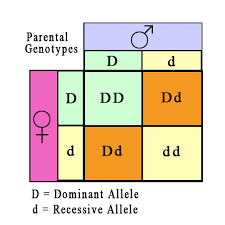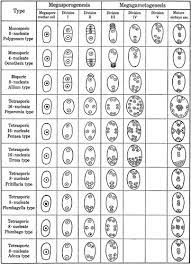Theories of Meristem Organization and Function
Theories of Meristem Organization and Function
Many anatomists illustrated the root and shoot apical meristems
on the basis of number and arrangement and accordingly proposed the following
theories – An extract of which are discussed below.
Shoot Apical Meristem:
Apical Cell Theory:
Apical cell theory is proposed by Hofmeister (1852)
and supported by Nageli (1859). A single apical cell is the structural and
functional unit. This apical cell governs the growth and development of whole
plant body. It is applicable in Algae, Bryophytes and in some Pteridophytes.
Histogen Theory:
Histogen theory is proposed by Hanstein (1868) and
supported by Strassburgur. The shoot apex comprises three distinct zones.
1. Dermatogen: It is a outermost layer. It gives rise
to epidermis.
2. Periblem: It is a middle layer. It gives rise to
cortex.
3. Plerome: It is innermost layer. It gives rise to
stele
Tunica Corpus Theory:
Tunica corpus theory is proposed by A. Schmidt (1924).
Two zones of tissues are found in apical meristem.
1. The tunica: It is the peripheral zone of shoot
apex, that forms epidermis.
2. The corpus: It is the inner zone of shoot apex that forms cortex and stele of shoot.
Root Apical Meristem:
Root apex is present opposite to the shoot apex. The
roots contain root cap at their apices and the apical meristem is present below
the root cap. The different theories proposed to explain root apical meristem
organization is given below.
Apical Cell Theory:
Apical cell theory is proposed by Nageli. The single
apical cell or apical initial composes the root meristem. The apical initial is
tetrahedral in shape and produces root cap from one side. The remaining three
sides produce epidermis, cortex and vascular tissues. It is found in vascular cryptogams.
Histogen Theory:
Histogen theory is proposed by Hanstein (1868) and
supported by Strassburgur. The histogen theory as applied to the root apical
meristem speaks of four histogen in the meristem. They are respectively
i. Dermatogen: It is a outermost layer. It gives rise
to root epidermis.
ii. Periblem: It is a middle layer. It gives rise to
cortex.
iii. Plerome: It is innermost layer. It gives rise to
stele
iv. Calyptrogen: It gives rise to root cap.
Korper Kappe Theory:
Korper kappe theory is proposed by Schuepp. There are
two zones in root apex – Korper and Kappe
1. Korper zone forms the body.
2. Kappe zone forms the cap.
This theory is equivalent to tunica corpus theory of
shoot apex. The two divisions are distinguished by the type of T (also called Y
divisions). Korper is characterised by inverted T divisions and kappe by
straight T divisions.
Quiescent Centre Concept:
Quiescent centre concept was proposed by Clowes (1961) to explain root apical meristem activity. These centre is located between root cap and differentiating cells of the roots. The apparently inactive region of cells in root promeristem is called quiescent centre. It is the site of hormone synthesis and also the ultimate source of all meristematic cells of the meristem.
Reference:
Fahn.A, (1990), Plant Anatomy, 3rd edition, Oxford; New York; Pergamon Press
Pijush Roy, (2012), Plant Anatomy, New Central Book Agency (P) Ltd.
Ray.F.Evert, (2007), Esau’s Plant Anatomy, 3rd Edition. Wiley-Liss





Comments